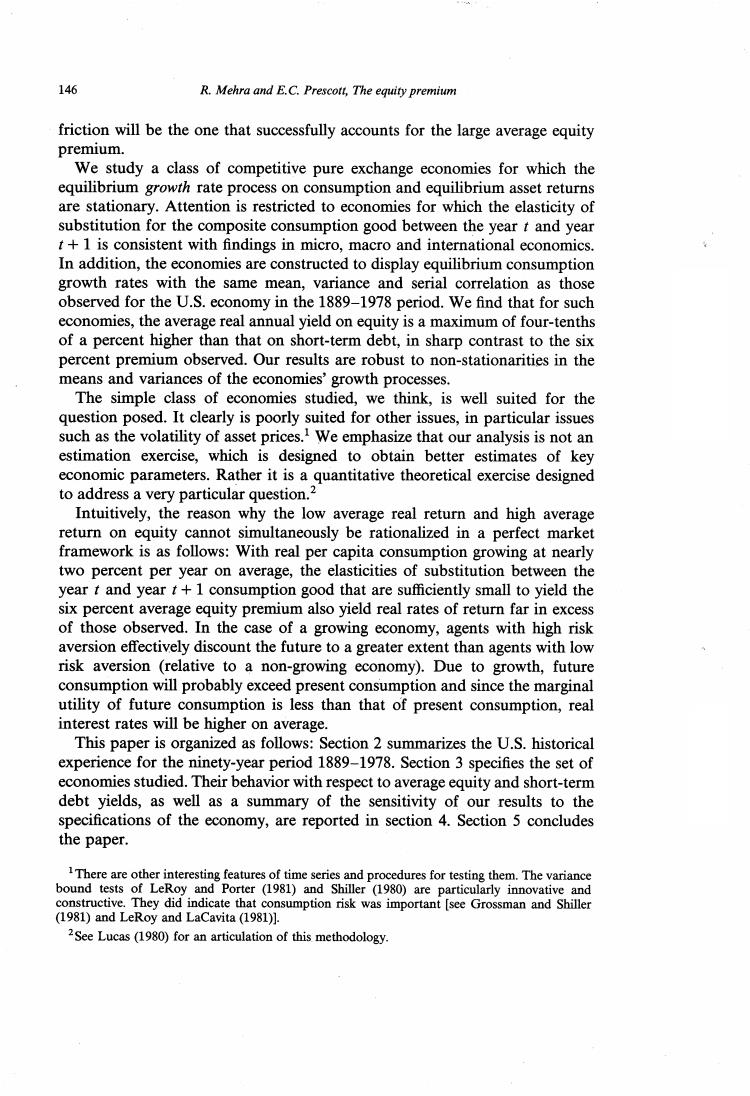正在加载图片...

146 R.Mehra and E.C.Prescott,The equity premium friction will be the one that successfully accounts for the large average equity premium. We study a class of competitive pure exchange economies for which the equilibrium growth rate process on consumption and equilibrium asset returns are stationary.Attention is restricted to economies for which the elasticity of substitution for the composite consumption good between the year t and year t+1 is consistent with findings in micro,macro and international economics. In addition,the economies are constructed to display equilibrium consumption growth rates with the same mean,variance and serial correlation as those observed for the U.S.economy in the 1889-1978 period.We find that for such economies,the average real annual yield on equity is a maximum of four-tenths of a percent higher than that on short-term debt,in sharp contrast to the six percent premium observed.Our results are robust to non-stationarities in the means and variances of the economies'growth processes. The simple class of economies studied,we think,is well suited for the question posed.It clearly is poorly suited for other issues,in particular issues such as the volatility of asset prices.We emphasize that our analysis is not an estimation exercise,which is designed to obtain better estimates of key economic parameters.Rather it is a quantitative theoretical exercise designed to address a very particular question.2 Intuitively,the reason why the low average real return and high average return on equity cannot simultaneously be rationalized in a perfect market framework is as follows:With real per capita consumption growing at nearly two percent per year on average,the elasticities of substitution between the year t and year t+1 consumption good that are sufficiently small to yield the six percent average equity premium also yield real rates of return far in excess of those observed.In the case of a growing economy,agents with high risk aversion effectively discount the future to a greater extent than agents with low risk aversion (relative to a non-growing economy).Due to growth,future consumption will probably exceed present consumption and since the marginal utility of future consumption is less than that of present consumption,real interest rates will be higher on average. This paper is organized as follows:Section 2 summarizes the U.S.historical experience for the ninety-year period 1889-1978.Section 3 specifies the set of economies studied.Their behavior with respect to average equity and short-term debt yields,as well as a summary of the sensitivity of our results to the specifications of the economy,are reported in section 4.Section 5 concludes the paper. 1There are other interesting features of time series and procedures for testing them.The variance bound tests of LeRoy and Porter (1981)and Shiller (1980)are particularly innovative and constructive.They did indicate that consumption risk was important [see Grossman and Shiller (1981)and LeRoy and LaCavita(1981)]. 2See Lucas(1980)for an articulation of this methodology